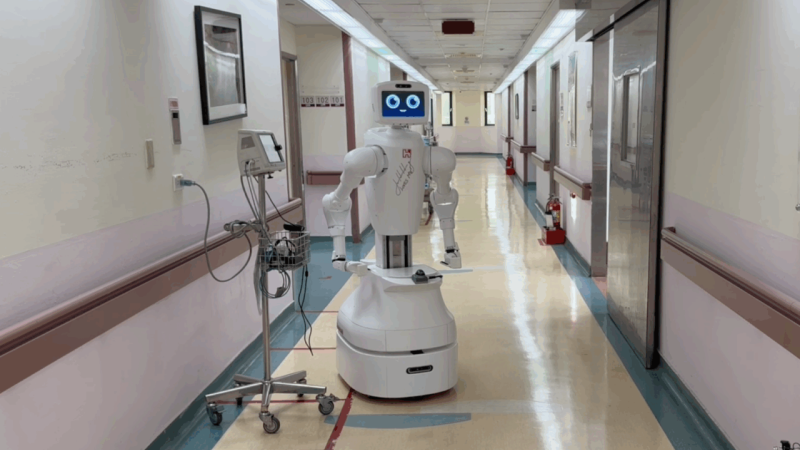Taiwan has unveiled what is being described as the world’s first robotic nurse, a landmark innovation in healthcare that combines cutting-edge artificial intelligence (AI) and robotics to assist with clinical and logistical duties in hospitals.
The robot, known informally as Nurabot, was introduced in a press event attended by key government and industry figures. Its development is a joint initiative between Foxconn, the Taiwanese electronics giant; NVIDIA, the U.S.-based AI and GPU leader; and Kawasaki, the Japanese industrial conglomerate known for advanced machinery.
With the healthcare sector facing an increasing shortage of nurses globally, the launch comes at a critical time. The World Health Organization (WHO) estimates a shortfall of at least 4.5 million nurses by 2030, driven by factors including aging populations, low wages, staff burnout, and the growing complexity of medical care.
According to project developers, Nurabot is built to shoulder some of the most physically demanding tasks in nursing. The robot can lift and transport heavy items, carry out scheduled medicine delivery, and guide visitors within hospital premises — all while using AI to process patient data and instantly relay critical health information to doctors.
Officials say the robot will not replace human nurses but instead support existing staff, especially during night shifts, when hospitals frequently operate with minimal personnel.
“This is a solution born out of necessity,” said a spokesperson for the Taiwanese Ministry of Health. “It is not just a technological feat but a human-centered approach to a pressing global crisis.”
One of the key features that sets Nurabot apart from earlier healthcare robots is its ability to understand natural language, navigate crowded hospital corridors, and interact empathetically with patients and families. This is made possible by NVIDIA’s AI systems and advanced robotics developed by Kawasaki, integrated seamlessly with Foxconn’s manufacturing and automation expertise.
International health experts are watching closely. Several countries, including Japan, Germany, and Canada, have reportedly expressed interest in adopting the robotic nurse technology, particularly in eldercare facilities and overburdened urban hospitals.
The development also signals a growing trend of cross-border collaborations in medical robotics. By blending AI with the practical demands of caregiving, Taiwan’s latest innovation could serve as a model for addressing workforce shortages while enhancing patient care standards worldwide.
While Nurabot will initially be deployed in select hospitals across Taiwan for testing and feedback, full-scale international deployment could begin within two years, pending regulatory approvals.
As healthcare systems continue to grapple with post-pandemic stress and workforce imbalances, Taiwan’s robotic nurse might just mark the beginning of a new era in clinical support — where robots and humans work hand in hand for better patient outcomes.

